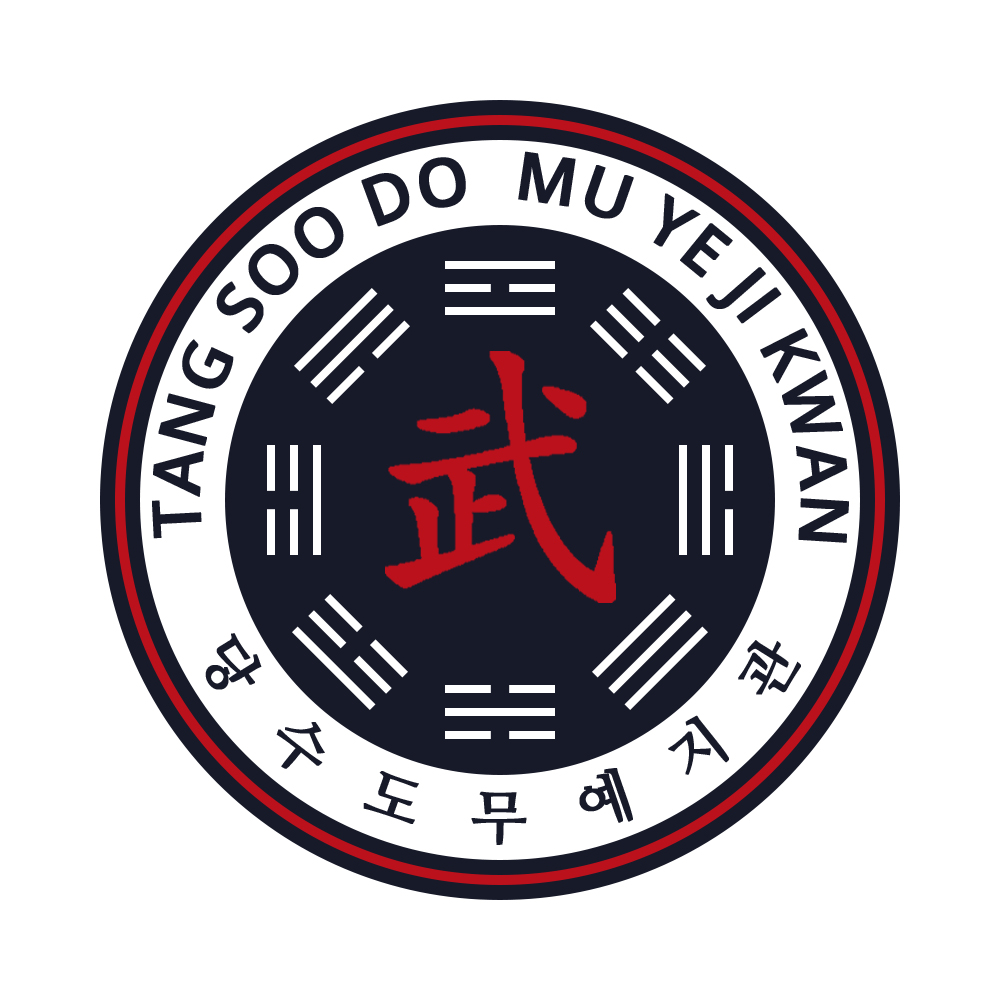TANG SOO DO
To avoid any confusion, it is important to explain a brief version of the history regarding the origin of the name “Tang Soo Do”.
During the Japanese occupation of Korea, it was forbidden to practise traditional Korean martial arts such as Tae Kyun, during this period this was very detrimental to the development of Korean martial arts.
The South Korean teacher ” Lee Won Kuk” Kwan Jang Nim and founder of the Chung Do Kwan style. Was the first to use the name Tang Soo Do in 1944 to give a Korean name to his martial art. His background and training was the Japanese martial art “Karate-Do”.
In 1926, he went to Japan to continue his studies, where he learnt the martial art Karate-Do under Gichin Funakoshi, the founder of the modern Shotokan style.
The original martial art being Tang Soo Do only originated and was influenced by the Japanese martial art (Karate-Do). The name “Tang Soo Do” therefore became very famous in Korea in a very short time. After the end of the Japanese occupation (August 1945), he was free to teach wherever he wanted and had the opportunity to introduce Tang Soo Do to the national police, the army and universities.
In 1947, he was arrested and imprisoned in Korean prison until 1950, after his release he emigrated to Japan.
The Chung Do Kwan style was in fact the founder of the name “Tang Soo Do” since 1944, this in turn allowed his students to open new Korean martial arts schools “Kwans” styles.
Only after the Korean Civil War and with the unification of several Kwans, they started to use the name Tae Kwon Do Chung Do Kwan and dropped the name Tang Soo Do. The Chung Do Kwan curriculum was definitely the foundation and can still be found in the Tang Soo Do Moo Duk Kwan style.
The basic training of those days is still the same today, hand/foot techniques, Hyungs, 3 and 1 step sparring, self defense.
Kwan Jang Nim “Hwang Kee” founder of the Moo Duk Kwan style first used the name Hwa Soo Do (Nov 1945) for his martial art, the curriculum was more based on the Chinese martial arts that he had learnt with Yang Kuk Jin in Manchuria.
After some time he realised that this content and name was not popular enough with the korean practitioners, a major reason was because this was very new to them and for the last 35 years of the Japanese occupation they had only practised the karate-Do style.
Since the great success of KJN Lee Won Kuk from the Chung Do Kwan style, KJN Hwang Kee therefore largely used this curriculum as well as the name Tang Soo Do in place of Hwa Soo Do.
Certainly not the most important but a profound reason why the Moo Duk Kwan style gained popularity in a very short period of time.
Only years later, upon the discovery of the unique and only Korean martial arts books “Mu Ye Dobo Tong Ji” did KJN Hwang Kee start to delve into the original Korean style “Subak”, in the late 1950s’ he then again performed a name change to Soo Bahk Do as martial art and Moo Duk Kwan as style. With this, he then also wanted the curriculum of his MDK style to be more influenced with the original Korean “SuBak” martial art.
Tang Soo Do itself is thus largely composed of the original Japanese karate-Do system and our traditional curriculum is a living proof of this, so most of the Hyungs in TSD originally came over to Korea from Japan/Okinawa, this via Lee Won Kuk’s Chung Do Kwan, this is a fact in history.
Kwan Jang Nim “Hwang Kee” added his own unique Hyungs (Chil Sung, Yuk Rho) in the curriculum of “Soo Bahk Do Moo Duk Kwan”.
Many of his direct students who had established their own schools outside Korea in USA, Europe and Asia continued to use the name Tang Soo Do and the traditional curriculum. The World Moo Duk Kwan (Soo Bahk Do) was officially established in the USA, so outside of Korea, this came into existence only since 1995.
